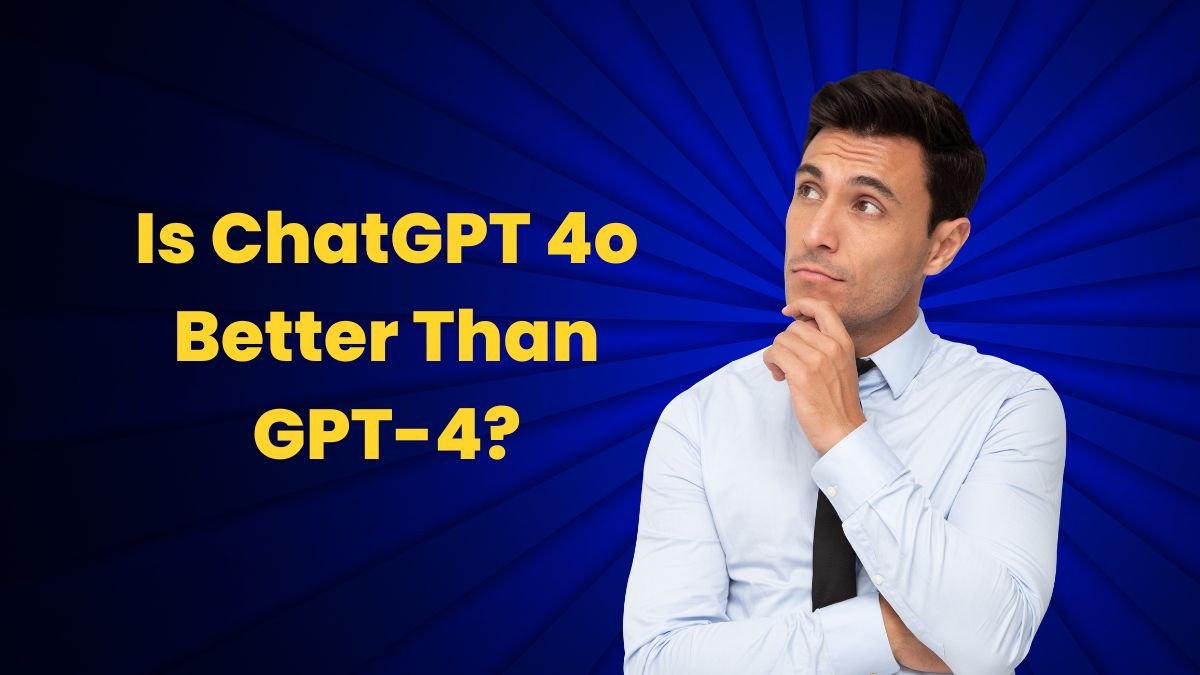Introduction
OpenAI has unveiled its latest and most advanced AI model, GPT-4o, ushering in a new era of human-computer interaction. With its remarkable multimodal capabilities, GPT-4o is poised to revolutionize various industries, from education and healthcare to content creation and beyond. This cutting-edge technology represents a significant leap forward, seamlessly integrating text, audio, and visual inputs, and delivering unprecedented levels of efficiency and accuracy.
What is GPT-4o?
GPT-4o, short for “GPT-4 omni,” is a state-of-the-art AI model developed by OpenAI, designed to handle a wide range of input and output modalities. Unlike its predecessors, which primarily focused on text-based interactions, GPT-4o can process and comprehend inputs from multiple sources simultaneously, including text, images, and audio.
This groundbreaking model boasts an impressive array of features and capabilities, setting it apart from previous AI models:
- Multimodal Understanding: GPT-4o can process and comprehend inputs from multiple sources simultaneously, such as recognizing tone, background noises, and emotional context in audio inputs, as well as solving equations written on paper in real-time.
- Improved Speed and Efficiency: With an astonishing response time of just 232 milliseconds, GPT-4o is significantly faster than previous models, delivering lightning-fast responses to queries.
- Enhanced Multilingual Support: GPT-4o demonstrates remarkable advancements in handling non-English text, making it more accessible and inclusive for users worldwide.
- Expanded Audio and Vision Understanding: GPT-4o can identify emotions from speakers on camera, recognize objects, and even solve equations written on paper in real-time, further expanding its capabilities beyond text-based interactions.
Is GPT-4o Better Than GPT-4?
Here’s a useful difference table highlighting the key improvements of GPT-4o over GPT-4:
| Feature | GPT-4 | GPT-4o |
| Response Time | Up to several seconds | 232 milliseconds (much faster) |
| Speed | – | 2x faster than GPT-4 Turbo |
| Cost | – | Half the price of GPT-4 Turbo |
| Rate Limits | – | 5x higher than GPT-4 Turbo |
| Input Modalities | Primarily text-based | Text, audio, images, video (multimodal) |
| Language Support | Limited | Significant advancements in non-English text |
| Reasoning Capabilities | – | Slightly better than GPT-4 |
Main Differences Between GPT-4o and GPT-4
To better understand the advancements brought about by GPT-4o, let’s delve into the main differences between this cutting-edge model and its predecessor, GPT-4:
- Multimodal Capabilities: Perhaps the most significant difference between GPT-4o and GPT-4 lies in their multimodal capabilities. GPT-4o can process and comprehend inputs from multiple sources simultaneously, including text, audio, and images. It can recognize tone, background noises, emotional context in audio, and solve equations written on paper in real-time. In contrast, GPT-4 was primarily focused on text-based inputs and outputs.
- Speed and Efficiency: GPT-4o’s response time of 232 milliseconds is remarkably faster than GPT-4’s response times, which could take up to several seconds. Additionally, GPT-4o is twice as fast, half the price, and has five times higher rate limits compared to GPT-4 Turbo, making it a more efficient and cost-effective solution.
- Language Support: GPT-4o demonstrates significant advancements in handling non-English text, making it more accessible globally. This expanded language support is a notable improvement over GPT-4’s more limited capabilities in this area.
- Reasoning Capabilities: While not a massive leap, GPT-4o provides slightly better responses in tests of reasoning abilities compared to GPT-4, indicating incremental improvements in this area.
Conclusion
OpenAI’s GPT-4o represents a groundbreaking advancement in the field of artificial intelligence, ushering in a new era of multimodal understanding and human-computer interaction. With its remarkable capabilities in processing text, audio, and visual inputs simultaneously, GPT-4o offers a level of versatility and efficiency that was previously unattainable.
From real-time translation across multiple modalities, breaking down language barriers, to improved productivity and creativity for content creators and artists, and enhanced accessibility in education through audio descriptions and real-time transcriptions, the potential applications of GPT-4o are vast and far-reaching.
While GPT-4o is still in the early stages of development, with certain features like audio outputs initially accessible in a limited form, OpenAI’s gradual rollout ensures that each modality meets necessary safety standards before full release. As this cutting-edge technology continues to evolve, it holds the promise of revolutionizing various industries and transforming the way we interact with artificial intelligence.

